All About Yucca: Growing and Caring for This Striking Plant
Yucca is a genus of perennial plants consisting of over 40 species, ranging from shrubs and trees to forms resembling agave or dracaena. Common species used as indoor ornamental plants include Yucca gigantea (also known as Y. guatemalensis or Y. elephantipes) and Yucca aloifolia. Yucca is native to the southwestern United States, Mexico, and the Caribbean. It's important to note that yucca is not related to yuca (cassava), the starchy tuber commonly used in Latin American cuisine.

Yucca is renowned for its exceptional drought tolerance and suitability for arid climates. Some species grow rapidly, up to 60 cm (2 feet) per year, while others grow more slowly, around 12 cm (5 inches) annually. Although Yucca can grow very large, turning into "monsters" that take up considerable space, this growth is slow, making them ideal as indoor plants for many years before becoming too large. Outdoor Yucca species can tolerate temperatures as low as -12°C (10°F), and some can even survive below freezing.
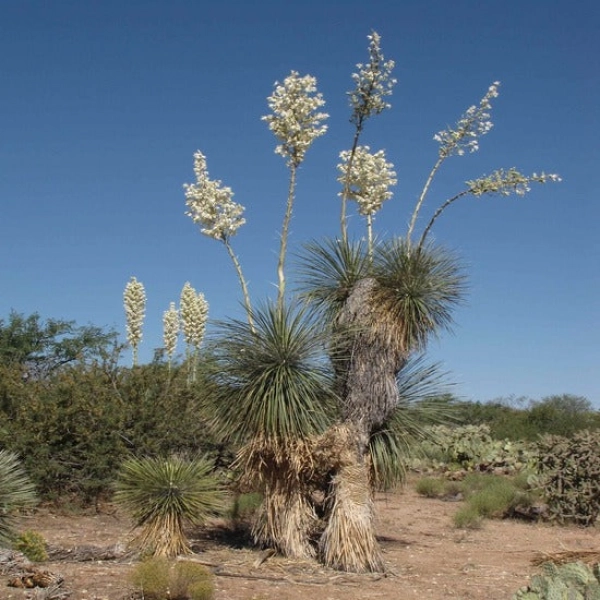
Yucca should be planted outdoors in early spring. However, avoid planting too close to buildings as its roots can be invasive, potentially damaging foundations, sidewalks, and underground pipes. Be cautious of the sharp, spiky tips of Yucca leaves, which can cause injuries if touched. Additionally, if you have pets, be mindful that all parts of the plant are toxic to dogs, cats, and horses.
Types of Yucca
1. Yucca gigantea (Y. guatemalensis or Y. elephantipes)
Known as the spineless yucca or yucca cane, this species has sword-like leaves but lacks the sharp spines at the tips, making it distinct from other Yucca varieties. When mature, it can develop into a small tree with a bare trunk and soft, spiraling leaves. It is the most commonly grown indoor Yucca, growing relatively slowly and living for many years before outgrowing indoor spaces.
2. Yucca aloifolia
Also known as the Spanish bayonet, this species features stiff, sharp-tipped leaves that can grow up to 50 cm (20 inches) long, making it dangerous to touch. This is not an ideal choice for households with young children.
Popular Outdoor Yucca Species
- Yucca baccata: This succulent species produces banana-like fruits that range in color from green to deep purple. Though they resemble bananas in appearance, their flavor is more akin to sweet potatoes.
- Yucca brevifolia: A symbol of the Mojave Desert, the Joshua tree grows very slowly and is the largest of all Yucca species, capable of reaching over 9 meters (30 feet) in height.
- Yucca filamentosa: An evergreen, stemless shrub with long, sword-like leaves, Yucca filamentosa is a slow-growing species often used as an ornamental outdoor plant.
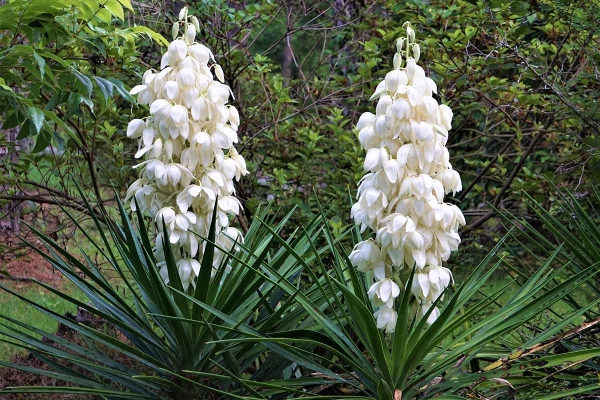
Indoor Yucca Care Guide
Yucca is a low-maintenance houseplant when grown in the right conditions. It adapts well to dry environments and doesn’t require much attention. However, it is very sensitive to overwatering, the most common sign being a soggy trunk. With proper care, a Yucca plant can live for 5 years indoors and between 20 to 50 years outdoors.
1. Best Conditions for Growing Indoor Yucca
Yucca thrives in environments with indirect light and low humidity. The plant rarely faces pest problems but may occasionally suffer from scale insect infestations. When grown indoors, Yucca typically sheds its lower leaves, creating a neat, tree-like appearance that is quite striking.
- Light: Yucca thrives in indirect sunlight. Growing it in low-light conditions can slow down its growth, making it weaker, while direct, intense sunlight can cause white spots on the leaves or make the tips dry, crispy, and brown.
- Soil: Yucca grows best in well-draining soil, similar to sandy soil found in its natural environment. You can plant it in regular potting soil but should add coarse sand and perlite to improve drainage. The plant doesn’t require special or nutrient-rich soil.
- Water: Yucca is prone to waterlogging, so water the plant once a week during the spring and summer. Ensure that the soil drains well and dries out between waterings. In winter, reduce watering to once every few weeks. Avoid leaving the Yucca in standing water, as this can cause root rot.
- Temperature and Humidity: As a desert plant, Yucca adapts well to a wide range of temperatures, from highs above 32°C (90°F) during the day to lows below 0°C (32°F) at night. It grows well in moderate humidity but also adapts to dry air. There’s no need to mist the plant.
- Fertilizer:Yucca doesn't require much fertilizer. During the growing season, apply a liquid or slow-release fertilizer once a month, following the package instructions. This will help the plant stay healthy.
2. Pruning Yucca
When your Yucca becomes too tall, you can prune it in early spring. Pruning is different for Yucca than for other houseplants. To prune, remove the plant from its pot and cut the trunk in half using a saw or pruning shears. Then, replant the base trunk in the pot and continue regular care. In a few weeks, the plant will grow new leaves. The top section can be replanted to propagate a new Yucca.
3. Removing Yucca
Some Yucca species have aggressive roots that can affect foundations or nearby structures. To remove a Yucca, cut the trunk close to the ground and dig out the roots. Any root left behind may regrow. In some cases, you may need to use a root killer or herbicide to prevent regrowth.
Propagating Yucca
Yucca can be propagated in several ways, allowing you to grow new plants from the parent plant. Here’s a detailed guide on how to propagate, plant, and care for Yucca through cuttings, offsets, seed germination, as well as how to repot Yucca and protect it during winter.
1. Propagation from cuttings and offsets
If your Yucca has grown too large, you can cut the trunk and replant the top section to create a new plant. However, propagating through offsets (young shoots) generally has a higher success rate.
Ideal time: The best time to propagate Yucca is in the fall when growth slows down and the plant is less affected.
Steps:
- Remove the mature Yucca from its pot.
- Separate the rootstock and offsets from the parent plant.
- Wait until the offsets turn green to ensure they have enough chlorophyll to survive independently. Avoid cutting pale offsets, as they still rely on the parent plant.
- Use a sharp knife to cut the offsets, ensuring some roots remain from the parent plant.
- Plant the offsets in new pots with well-draining soil and water enough to keep the soil moist but not waterlogged.
- The offsets will quickly root and grow into new plants within a few weeks.
2. Propagation from seeds
Propagating Yucca from seeds takes more time, but it allows you to grow a new plant from scratch. According to the USDA, the success rate of germinating Yucca seeds can be between 45% to 98% if done correctly.
Steps:
- Collect the fruit when it starts to dry but hasn’t yet split. Then, crush the pods to extract the seeds.
- To improve germination, store the seeds in moist sand in the refrigerator for about 90 days (this cold treatment helps Yucca seeds sprout better).
- In March, start sowing the seeds indoors at a temperature of 15–21°C (60–70°F). Soak the seeds in warm water for 24 hours before sowing to soften the seed coat.
- Use sterile soil or seedling mix, plant the seeds about 1/8 inch deep, and keep the soil moist. The seeds will sprout in 4–5 weeks.
Repotting Yucca
Yucca grows well in pots, but it needs enough space for its roots to expand. However, it doesn’t require frequent repotting. Repot the plant every 2–3 years or when it becomes root-bound.
Repotting large plants: For large Yucca plants, refreshing the soil is an effective way to rejuvenate the plant without needing to change the pot entirely. You can remove about 2 inches of the topsoil and replace it with fresh, nutrient-rich soil.
Winter Care for Yucca
- Potted Yuccas: If your Yucca is in a pot, bring it indoors and protect it from frost during its first winter.
- Mature plants: Large Yuccas are cold-tolerant but should be protected from freezing winds by removing dead leaves and applying a 6–8 inch layer of mulch at the base before frost sets in. In colder regions, you may also cover the plant with plastic or burlap to insulate it.
Pests and Common Problems
1. Pests
Insects: While Yucca is generally pest-resistant, it can occasionally be affected by aphids, mealybugs, or agave plant bugs. If you spot small brown scars on the leaves, use insecticidal soap to eliminate the pests.
Fungal diseases: Yucca can develop fungal infections when overwatered, causing black spots on the leaves. Treat with a fungicide or neem oil.
2. Common Problems with Yucca:
Yellow leaves and soggy trunk: Overwatering is the main culprit. Check soil moisture before watering.
- Sunburn: If exposed to direct sunlight too quickly after being in shade, the plant may get sunburned. Gradually move it to a sunnier spot.
- Curled leaves: If your Yucca has curled leaves, it may be too hot or too cold. Adjust the temperature to bring the plant back to normal.
How to Make Yucca Bloom
Yucca can produce beautiful flowers, but if yours isn’t blooming, ensure it gets enough nutrients, particularly phosphorus (bone meal is a good option). Avoid overwatering, which can cause fungal diseases, weakening the plant and preventing it from blooming. Yucca typically flowers in spring and summer, so moving the plant outdoors during this time can encourage blooming.
By following these steps, you can easily propagate and care for Yucca, ensuring it stays healthy and grows well in all conditions.
Tags: Indoor Ornamental Plants | Outdoor Ornamental Plants | Bonsai Plants | Aquatic Ornamental Plants | Miniature Ornamental Plants |










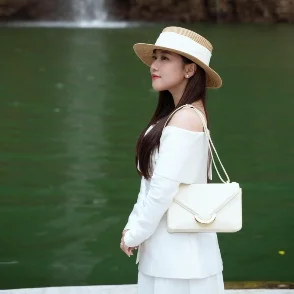

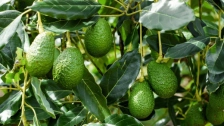
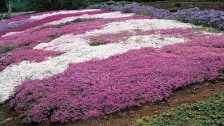







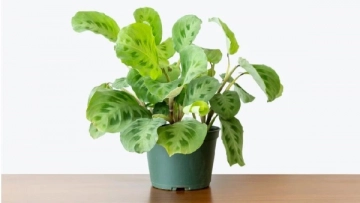

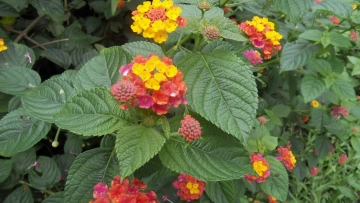
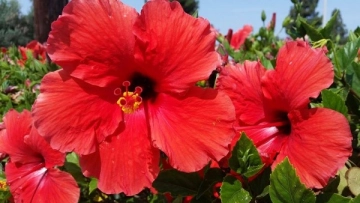
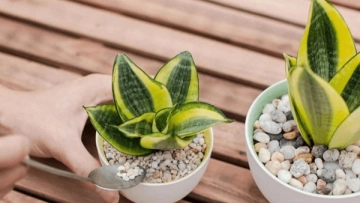
Caitlyn Kline
October 01 , 2024
Thanh Thao
September 28 , 2024